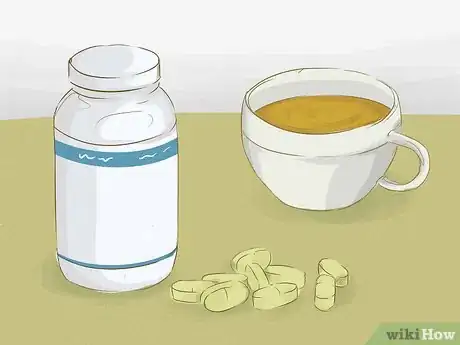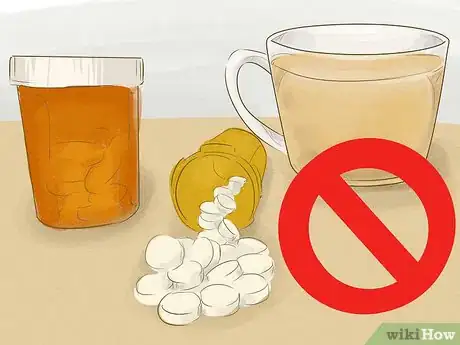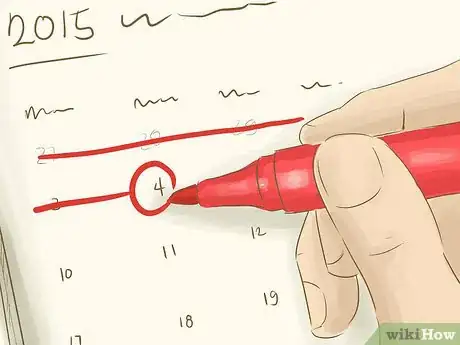This article was medically reviewed by Luba Lee, FNP-BC, MS. Luba Lee, FNP-BC is a Board-Certified Family Nurse Practitioner (FNP) and educator in Tennessee with over a decade of clinical experience. Luba has certifications in Pediatric Advanced Life Support (PALS), Emergency Medicine, Advanced Cardiac Life Support (ACLS), Team Building, and Critical Care Nursing. She received her Master of Science in Nursing (MSN) from the University of Tennessee in 2006.
wikiHow marks an article as reader-approved once it receives enough positive feedback. In this case, 96% of readers who voted found the article helpful, earning it our reader-approved status.
This article has been viewed 86,914 times.
Triphala is an important component of Ayurveda (traditional Indian) medicine. It is made up of three fruits: Amla, Haritaki, and Bibhitaki. It is typically prepared as a tea, but you can also find it in tablet, liquid, and capsule forms. Traditionally, triphala is used to fight a range of issues, from intestinal problems like gas and constipation to immune system problems like inflammation. Many of these uses are not scientifically proven, however, so it is best to talk with a doctor before using triphala, particularly if you are taking other medications.
Steps
Choosing a Form and Dose
-
1Use a traditional form of triphala. You can take triphala fruits in their dried form, or prepared as a tea. Both of these traditional forms can be purchased online or from natural health stores. To prepare the tea, stir a half teaspoon (2.5 g) of the powder into a cup of hot water. Alternatively, you can combine the same amount of powder with honey or ghee and take it before a meal.
-
2Select a commercially prepared form of the medicine, alternatively. Triphala can be purchased online or from natural health stores in capsule, liquid, tablet, and chewable forms. Choose one of these if you find it convenient. Check the package instructions to determine the dosage equivalent to a traditional form of triphala.[1]
- To use the liquid supplements, you usually stir 30 drops into a cup of water or juice 1-3 times per day.
- Capsules, tablets, or chewables should be taken once or twice a day.
Advertisement -
3Take triphala on an empty stomach, in most cases. If you are taking multiple doses per day, try having one in the morning before eating. Then take another before your evening meal. However, if you are taking triphala for digestive benefits, such as a laxative or digestive tonic, have a dose in the evening, about 2 hours after eating dinner or about 30 minutes before going to bed.
- Taking triphala on an empty stomach is the traditional recommendation. This probably helps maximize the effects of the medicine.
-
4Have your dose of triphala separately from other medicines. Whatever condition you are using triphala to treat, take it 2 hours before or after any other medicine or supplements. This ensures that you get its full benefits.[2]
Using Triphala for Traditional Benefits
-
1Relieve occasional digestive problems. Traditionally, triphala is consumed to get rid of gas, constipation, upset stomach, and a host of other gastrointestinal problems. If possible, take triphala in its dried fruit form or prepare as a tea. Then take 1 to 3 grams (about 0.25 to 0.5 teaspoons) of it each day.[3]
- If you want to use triphala as a laxative, take 2 to 6 grams (0.071 to 0.21 oz) (about 0.4 to 1.25 teaspoons) each day.
- Triphala will take 6-12 hours to have its laxative effect. Don’t use it as a laxative for more than 7 days.
-
2Clear up a cough. You can easily clear up a common cough with triphala. Just take 2 to 6 g of the dried fruit each day until the problem clears up! You can also sip a cup of triphala tea for soothing relief.[4]
-
3Strengthen your immune system. Have 1-3 cups of triphala tea per day to ward off a variety of illnesses. Traditionally, triphala is thought to improve your immune system and keep you healthy in general.[5]
- You can take triphala in other forms to receive its immune benefits as well.
-
4Reduce inflammation. A daily dose of triphala can alleviate pain and discomfort caused by arthritis and other inflammatory conditions. Talk to your doctor to determine the right dosage for your condition, and to discuss whether or not triphala will interact with other medications you may be taking for your condition.[6]
-
5Lower your cholesterol. The digestive benefits triphala is traditionally thought to have may also reduce your levels of “bad” (LDL) cholesterol. If you are taking any other medications for cholesterol, however, talk to a doctor before starting with triphala.[7]
-
6Fight cancer. Traditionally, triphala is thought to reduce cancerous cells in patients suffering from the illness. However, research on this effect is inconclusive. If you have cancer, you can ask your doctor whether or not they think triphala is potentially a safe and effective option.[8]
- Triphala should not replace conventional cancer treatments.
Taking Triphala Safely
-
1Talk to your doctor before using triphala if you have serious symptoms. If you have abdominal pain, nausea, fever, or vomiting, these can be signs of a major illness. In addition, triphala’s powerful laxative properties may make these symptoms worse. For this reason, it’s best to double-check with a doctor before taking the medicine.[9]
-
2Don’t use triphala if you have chronic intestinal problems. If you have a condition like Crohn's disease, ulcerative colitis, or another inflammatory colon disease, or any other chronic bowel issue, you should avoid taking triphala. Its effects can severely irritate these conditions as well as:[10]
- Intestinal blockage
- Atonic bowel
- Appendicitis
- Rectal bleeding
- Dehydration
-
3Ask your doctor about using triphala if you are pregnant or nursing. Triphala is not recommended for people who are pregnant or nursing. Even though triphala is a natural, fruit-based product, it does have potent medicinal properties. This means that it can impact your pregnancy or the health of your child. If your doctor thinks it’s ok for you to take triphala, they can help you come up with a safe dosing strategy.[11]
-
4Reduce your dosage or stop taking triphala if you experience side effects. Take note if you experience abdominal pain, cramps, spasms, or diarrhea while taking triphala. If you do, try reducing the dose, or stop taking triphala entirely.[12]
-
5Take a 2-3 week break from triphala every 10 weeks. Though triphala isn’t addictive, it’s recommended that you refrain from using it constantly for an extended period of time. After taking triphala for 10 weeks, stop taking it for 2-3 weeks. Then, you can resume your daily regimen of taking triphala. This helps ensure that the remedy is as effective as possible.
References
- ↑ http://webprod.hc-sc.gc.ca/nhpid-bdipsn/atReq.do?atid=triphala&lang=eng
- ↑ http://webprod.hc-sc.gc.ca/nhpid-bdipsn/atReq.do?atid=triphala&lang=eng
- ↑ https://www.mskcc.org/cancer-care/integrative-medicine/herbs/triphala
- ↑ http://webprod.hc-sc.gc.ca/nhpid-bdipsn/atReq.do?atid=triphala&lang=eng
- ↑ https://www.mskcc.org/cancer-care/integrative-medicine/herbs/triphala
- ↑ https://www.mskcc.org/cancer-care/integrative-medicine/herbs/triphala
- ↑ https://www.mskcc.org/cancer-care/integrative-medicine/herbs/triphala
- ↑ https://www.mskcc.org/cancer-care/integrative-medicine/herbs/triphala
- ↑ http://webprod.hc-sc.gc.ca/nhpid-bdipsn/atReq.do?atid=triphala&lang=eng
About This Article
Triphala is a tea or tablet made from fruit that's used in Ayurvedic medicine to treat intestinal problems and immune system issues. To prepare Triphala tea, stir 1/2 teaspoon of Triphala powder into 1 cup of hot water. You can also stir the same amount of powder into some honey or ghee and take it before a meal. For the liquid supplement, stir 30 drops into a cup of water or juice 1 to 3 times per day. Take capsules, tablets, or chewables once or twice a day. Take Triphala on an empty stomach to maximize the effects of the medicine. For more tips from our Medical co-author, including how to know if you have a condition that will keep you from taking Triphala, keep reading!











































































